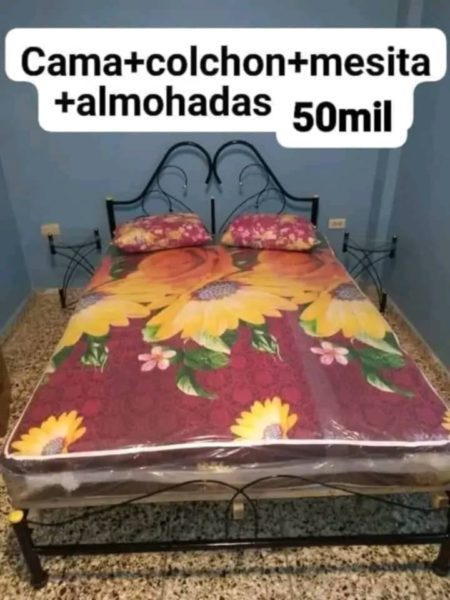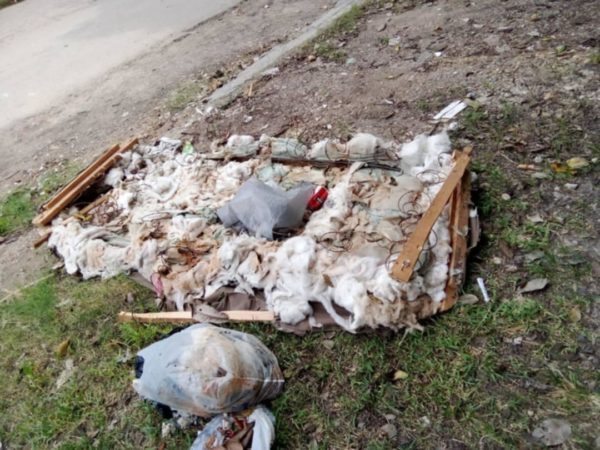He Left Holguin and Went to Havana to Repair Mattresses

By Laura Gomez
HAVANA TIMES – Surviving in Cuba is an ever more difficult feat and to grow and adapt amid so many difficulties is already a motto drummed into our subconscious. Out of necessity, Douglas Paez, 34, migrated from Holguin to Havana to open a new path for himself.
When did you decide to come to Havana?
At the end of 2022. It was a decision I consulted with my family, especially my wife. She didn’t want to come with me, she doesn’t like change. I began living with a cousin in Playa [a municipality in Havana province], in a neighborhood called Romerillo. He told me he planned to open a mattress business and wanted me to be his helper.
How hard was it to adapt to life in another province?
It was a total challenge. I had to get used to living in an alleyway full of wooden houses with zinc roofs and electric wires stretching across the sky from one house to another. La Aldea, a part of the Romerillo neighborhood, is unusually overcrowded – I’d never seen so many people living one on top of the other.
I was welcomed with a bottle of rum, a quick explanation of the job, and comments about the situation in the country. The next day, another bottle – and another, until I realized my money was running out. There were vendors wandering through all the byways, peddling all kinds of things, and it wasn’t hard at all to imagine myself as one of them. It wasn’t easy, but I never thought about going back. I’m convinced that my wife wouldn’t have been able to stand living in these conditions.
When did you begin repairing mattresses?
After about a month, I met with the other helper. There, they explained that my work would consist in going through the different neighborhoods proclaiming: “Mattress repairs!” I didn’t want to do that, but in the end I had no right to make any demands. It was exhausting work – walking for hours under the sun and with little money to eat what was available. When some client expressed interest, I’d note the address and later the mattress repair crew would arrive in a pick-up with all the tools. They’d park on a corner and then work in the house or yard to restore the old mattress, leaving it as good as new. I’d get 20% of the price charged, so if the mattress repair cost 2,500 pesos, they’d give me 500.

When did you actually begin working as a repairer?
I sat down with my cousin one day and told him I was tired of hawking the mattress service under the sun. After thinking about it for a while, he accepted and hired somebody else. So, then I began straightening springs, putting in linings, adding and distributing the stuffing, and sewing. It’s work that requires a lot of detail; we don’t always have springs to substitute for the broken ones, so in those cases we have to line them up so they match. You also have to distribute the stuffing so it covers the compete surface. We reuse the stuffing that’s already there, and sometimes add padding from others that have been discarded.
I know some will find that anti-hygienic and hard to imagine that someone could sleep on a bed padded with scraps that sometimes came from the trash, but this is Cuba. You can no longer buy a mattress in the stores here using national currency. Even [before] when they did sell them, the prices were only affordable to a few. Because of that, those who have need of the service save that money, and few of them think about what they’re sleeping on.
How do you feel about your work?
I enjoy working on something old and seeing it transformed into something that appears new, despite the risk. Most of the mattresses we work on are in deplorable condition. The dust we inhale is a health hazard. Even though we sometimes use face masks, the dust stays on our clothes and gets in our hair. We’ve worked on mattresses where invalids have been, that smell of urine and feces. Others are infested with bedbugs and we suggest that they fumigate them first. Sometimes the bugs and the odor remain. We can put up with the smell, but we won’t work if there are bugs, because we have to protect the business.
How much do you charge?
We charge 2,500 pesos, including transportation. If we have to put on a new lining, we ask 3,000 pesos. We always check the prices with the client because not everyone has a budget for this. I feel really bad for the people who can’t pay, especially those who are retired and whose pensions in no way cover their needs. When a person repairs their mattress, it’s because they don’t have the means to buy a new one.

Have you ever had to repair your own mattress?
One time my wife and I found ourselves in the position of having to refill ours with rags. The wires stuck out and pricked our skin. For that reason, I feel empathy for people. I sometimes think about going back to Holguin and repairing the mattresses of my people there, even if it’s for free. Believe me, a mattress in bad shape interrupts your sleep, gives you a backache and you wake up feeling bad.
Do you feel you’re performing a service for ordinary Cubans?
Of course. Our society is on a downslide. I see on Facebook the ads for new foam mattresses, at prices over 15,000 pesos or more, including courier service and guarantees. It hurts me to know that so many of us are sleeping on a repaired mattress, while others sleep on the floor. I want to believe that my work contributes to people’s health. I, myself, am currently sleeping on a single mattress with broken springs, and even though I have all the conditions to do so, I don’t repair it. As the saying goes: “the shoemaker’s children go barefoot.”





